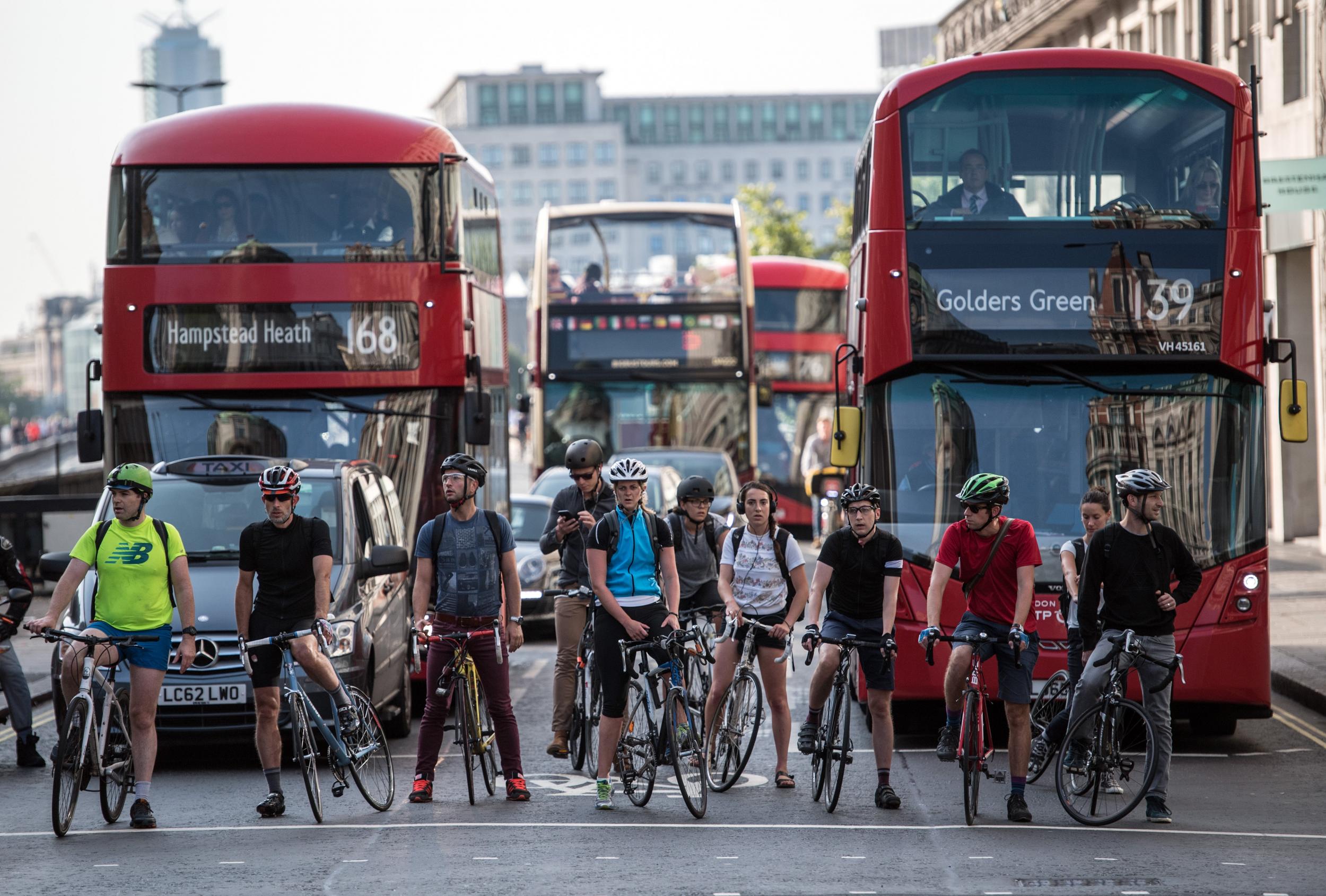Road safety warning sounded as third of drivers not aware of new Highway Code changes
Confusion over the new advice could lead to accidents, motoring associations warned

Millions of motorists are unaware of dozens of changes to the Highway Code that are intended to provide more protection for cyclists and pedestrians from today, a poll suggests.
A third of drivers did not know that 50 new rules and amendments were coming into force, and 4 per cent said they had “no intention” of looking at the details, according to a survey by the AA of 13,700 people.
As part of the revamp in England, Scotland and Wales, cars are expected to give way when pedestrians are crossing or waiting to cross at junctions.
Cyclists are advised to ride in the centre of lanes on quieter roads, in slower-moving traffic, and when approaching junctions, to make themselves as visible as possible.
The guidance also introduces a hierarchy of road users based on how potentially dangerous their mode of transport is in the event of a collision. A motorist will be expected to watch out for cyclists, pedestrians, and horseriders, and cyclists will need to be aware of pedestrians.
When overtaking cyclists, drivers travelling at speeds of up to 30mph should leave space of at least 1.5 metres. They should give more space when overtaking at higher speeds.
Drivers and passengers of cars should use the “Dutch reach” to open doors to prevent hitting cyclists and motorcyclists. The move requires using their hand on the opposite side to the door, making them turn their head to look over their shoulder.
Traffic should give way when people are waiting to cross at junctions – an update to earlier guidance that applied only to those who have already stepped out on to the crossing. Traffic must give way to people on zebra crossings.
The new advice makes says two people can cycle side by side, but should be considerate of the needs of other road users when in groups.
The changes are advisory, so non-compliance is not punishable by a fine.
AA president Edmund King expressed concern at the potential impact of the guidance to give way to pedestrians at junctions.
He said drivers are “likely to get hit by another vehicle from behind” if they stop on dual carriageways or fast-flowing A-roads to let a pedestrian cross to the other side.
He also warned that pedestrians could be endangered if one vehicle gives way but another travelling in the opposite direction fails to stop.
“Drivers will have to make their own judgments on what they should do in the scenarios they find themselves in,” Mr King told the PA news agency.
“However, if the judgments of the driver and the pedestrian are at odds on a very busy road, this could lead to problems.”
RAC head of roads policy Nicholas Lyes warned that the “substantial” changes carry a risk of sparking “angry clashes and, worse still, unnecessary collisions” unless all road users are aware of them.
He added: “Nobody wants to be on the right side of the Highway Code changes but in the back of an ambulance because of confusion on the part of a driver or any other road user.”
The charity Cycling UK said the changes must be “communicated with simple, accurate and memorable messaging”.
A communications drive will be launched by the Department for Transport’s road safety offshoot Think! in mid-February, and there will be further campaigns in the summer.
The roads minister, Lady Vere, said this week that the updated Highway Code would make roads safer and encourage people to “respect and consider the needs of those around them”.
Join our commenting forum
Join thought-provoking conversations, follow other Independent readers and see their replies
Comments


Bookmark popover
Removed from bookmarks